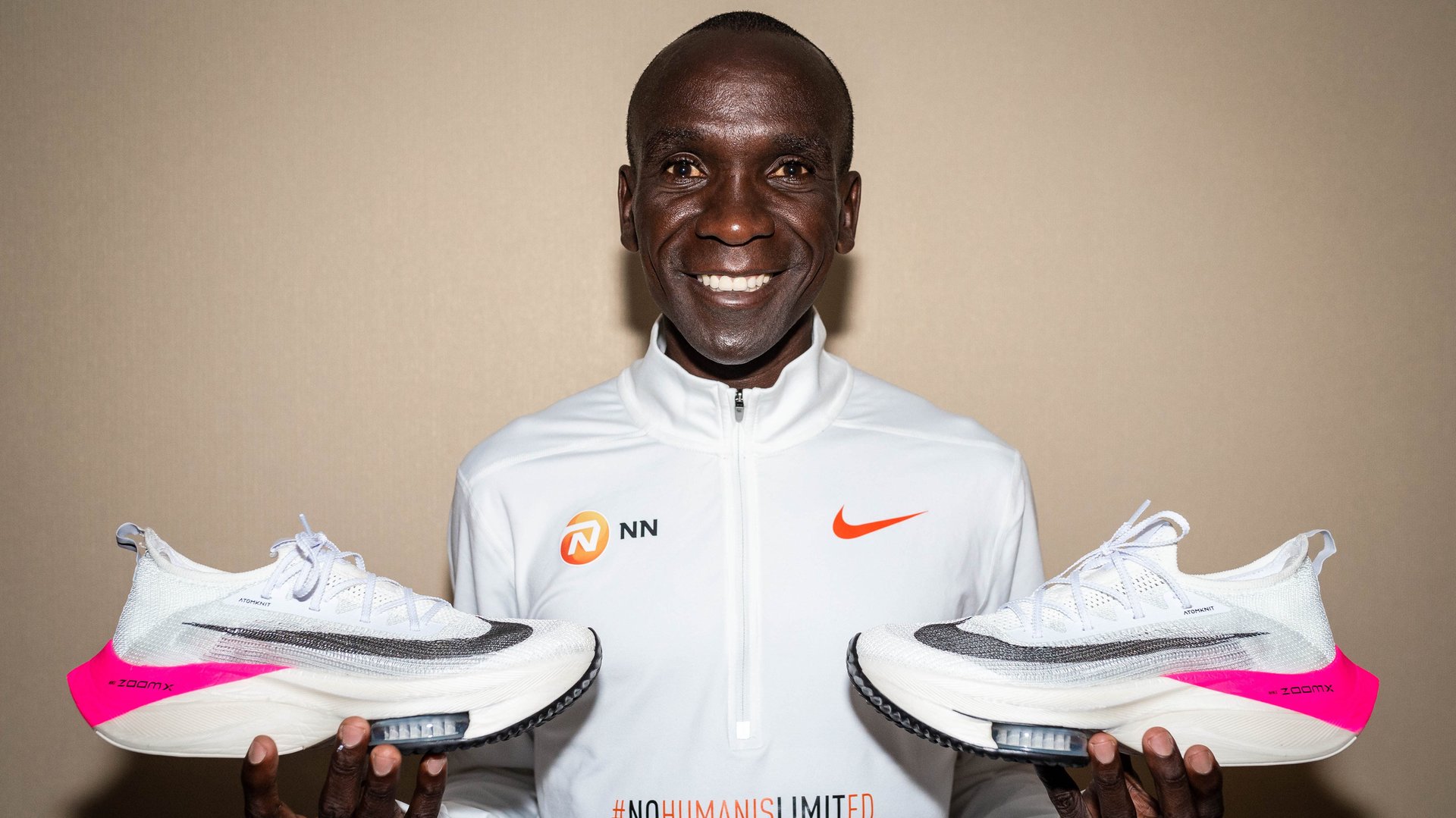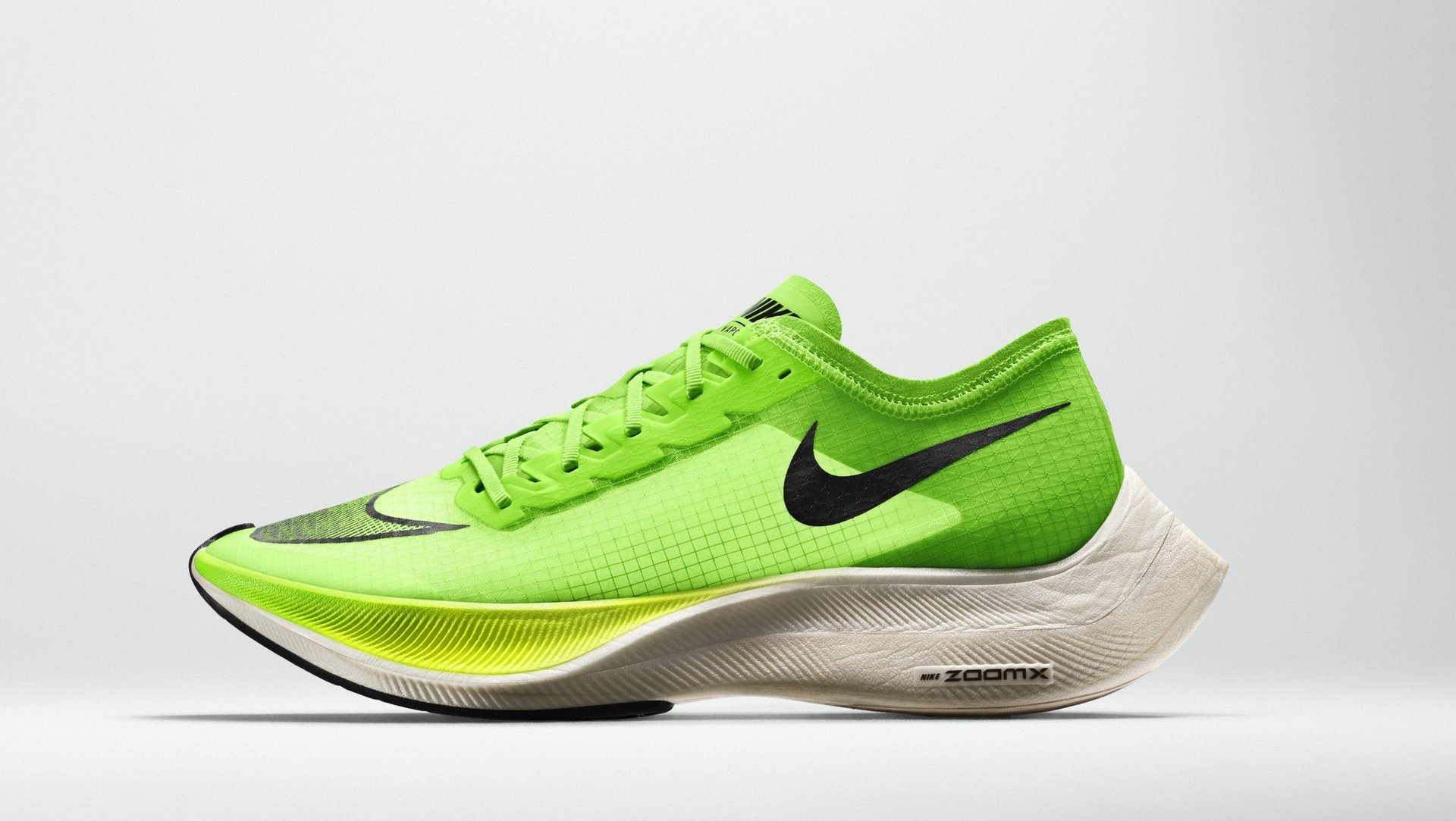Will Nike’s shoes decide the New York City Marathon’s next winner?
On Nov. 3, when runners compete in the world’s largest marathon in New York, there will be extra scrutiny on their shoes, particularly if those shoes are Nike’s Vaporfly Next%.


On Nov. 3, when runners compete in the world’s largest marathon in New York, there will be extra scrutiny on their shoes, particularly if those shoes are Nike’s Vaporfly Next%.
The sneakers have been hotly debated for at least a year, and even more so since mid-October, when Kenyan distance runners Eliud Kipchoge and Brigid Kosgei both broke marathon records wearing versions of the sneakers. The line uses a carbon-fiber plate packed in foam, which Nike’s research has found can make a runner more efficient. It’s prompted some to question whether they qualify as a mechanical performance enhancer.
It’s unclear as of now who might wear the shoes in New York, contested over a relatively hilly course not known for record-setting times anyway. But it wouldn’t be much of a surprise to see the sneakers among the first crossing the finish line, especially among the men. Top competitors taking part this year include Ethiopia’s Lelisa Desisa, who won last year’s New York City Marathon. He’s a Nike-sponsored athlete and part of the group of runners Nike worked with in its previous efforts to have a runner break the two-hour marathon barrier in its Vaporfly shoes.
He’s going up against another Nike runner, Geoffrey Kamworor of Kenya, who won the New York City Marathon in 2017 and has said he doesn’t believe the Vaporfly Next% provides an unfair advantage. He happens to train with Kipchoge, who recently wore an unreleased version of the Vaporfly Next% to become the first person ever to run a marathon in less than two hours.
The International Association of Athletics Federations (IAAF), the governing body for track and field, has been investigating what advantages the shoes might offer since April. It hasn’t moved to ban them as yet, and so neither have groups such as New York Road Runners (NYRR), which oversees New York’s marathon. “We are in touch with all the athletes who will be competing in the marathon this year and they are all looking forward to competing in whichever shoes they choose to run in,” Chris Weiller, NYRR’s vice president, said in a statement. The New York City Marathon, he explained, is an IAAF race and follows the rules it sets out, including any restrictions on shoes or clothes.

It’s the uncertainty around the sneakers that makes them such a tricky subject. The IAAF rules say a runner’s shoes can’t confer an “unfair advantage” and have to be “reasonably available” to everyone. They don’t explain how to test shoes for these standards.
Ryan Hall, a retired and decorated US distance runner, wrote on Instagram, “when a shoe company puts multiple carbon fiber plates in a shoe with cushion between the plates it is no longer a shoe, it’s a spring, and a clear mechanical advantage to anyone not in those shoes.”
But running-shoe midsoles of all sorts are designed like springs. Most use foams to do the job. “Running shoe brands have always tried to make competition shoes faster by maximizing shock absorption, reducing energy loss, and optimizing the natural spring action and propulsion of the lower leg,” Brian Metzler, author of Kicksology: The Hype, Science, Culture and Cool of Running Shoes, wrote in Runner’s World. “But these developments only make runners more efficient. They can’t add speed that isn’t already there.”
He noted that running brands Brooks and Saucony are working on their own shoes with carbon-fiber plates, while Hoka has already released its Carbon Rocket. In the meantime, anyone with $250 can run in the Nike Vaporfly Next%.
It’s not so simple for athletes sponsored by other companies, however, and the question remains whether a more efficient shoe can be the differentiator among athletes who train rigorously to be the best. According to the New York Times, in just over a year, men running in the shoes recorded the five fastest marathon times ever. Amby Burfoot, the former editor-in-chief of Runner’s World, said on NPR it will shift the focus from an athlete’s conditioning to the technology on their feet. “I believe the IAAF has to do something,” he said.
The IAAF has established a working group “to consider the issues and, if necessary, recommend changes to the technical rules,” it said in statement. It includes experts in science, ethics, footwear, biomechanics, and law, as well as two former athletes.
Its task isn’t a simple one. “Recent advances in technology mean that the concept of ‘assistance’ to athletes, whether from shoes, prostheses, or technologies with a similar effect, has been the subject of much debate in the athletics world,” the IAAF said. “The challenge for the IAAF is to find the right balance in the technical rules between encouraging the development and use of new technologies in athletics and the preservation of the fundamental characteristics of the sport: accessibility, universality and fairness.”
Running, of course, isn’t the only sports to wrestle with questions of the unfair benefits of technology. About a decade ago, athletes wearing Speedo’s full-body LZR swimsuits made with polyurethane broke more than 130 swimming records. Ultimately FINA, the sport’s governing body, ruled they created an unfair advantage and banned suits that covered most of the body.
The IAAF expects to release its findings by the end of the year, which could determine whether next year’s version of the Vaporfly Next% is allowed in New York’s marathon or not.
We reached out for comment from Nike, and will update this post if they reply.